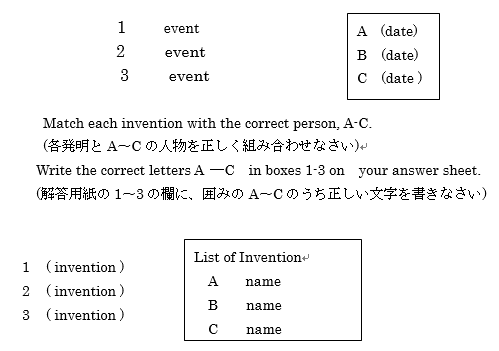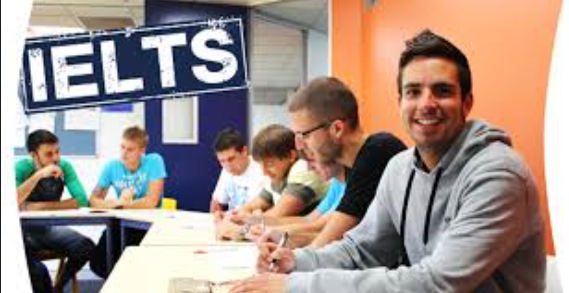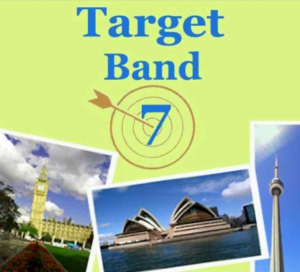▮ 【出題形式】- 6〜11
6 . Diagram label completion (図表を完成させる)
Label the diagram below. Choose NO MORE THAN THREE WORDS from the passage for each answer.
(下の図表を完成させなさい。それぞれのパッセージから3語以内を選びなさい)

7 . Matching headings (見出しを選ぶ)
Reading Passage 1 has four sections, A-D.
(パッセージ1は4つのセクションA〜Dから成ります)
Choose the correct heading for each section from the list of headings below.
(下の見出しのリストから各セクションにふさわしい見出しを選びなさい)
Write the correct number i-viii in boxes 9-13 on your answer sheet. 
(i〜viiiのうち正しい数字を解答用紙の9〜13の欄に書きなさい)
8. Matching information (情報を一致させる)
Reading passage 2 has eight paragraphs, A-H.
(パッセージ2は8つのパラグラフA〜Hから成ります)
Which paragraph contains the following information ?
(以下の情報が記述されているのは、どのパラグラフですか)
9. Identifying writer’s views / claims (書き手の見解・主張を識別する)
Do the following statements agree with the views of the writer in Reading Passage 3 ?
(次の記述内容は、パッセージ3の書き手の見解と一致しますか)
In boxes 30-34 on your answer sheet write….
(解答用紙の30〜34の欄に以下のように書きなさい)
YES if the statement agrees with the views of the writer.
(記述内容が書き手の見解と一致しているなら、YES「はい」)
NO if the statement contradicts the views of the writer.
(記述内容が書き手の見解と異なるなら、NO「いいえ」)
NOT GIVEN if it is impossible to say what the writer thinks about this.
(どちらともいえない場合は、NOT GIVEN「該当なし」)
10. Identifying information (情報を識別する)
Do the following statements agree with the information given in Reading Passage 3 ?
In boxes 30-34 on your answer sheet write.
(解答用紙の30〜34の欄に以下のように書きなさい)
TRUE if the statement agree with the information
(記述内容が情報と合致しているなら、TRUE「真」)
FALSE if the statement contradicts with the information
(記述内容が情報と矛盾しているなら、FALSE「偽」)
NOT GIVEN if the information is no information on this.
(記述内容に関する情報がないなら、NOT GIVEN「該当なし」)
11. Matching (組み合わせる)
According to the information in Reading Passage 1, match the following events as occurring in :
(パッセージ1の情報から、以下の出来事を起きた日にちと組み合わせなさい)
Write the correct letter, A, B or C in boxes 1-3 on your answer sheet.
(解答用紙の1〜3の欄に、囲みのA,B, Cのうち正しい文字を書きなさい)



















